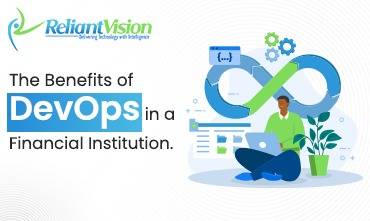In today’s digital world, companies can no longer afford to fall behind the competition if they don’t provide customers with value quickly and consistently. Companies nowadays are becoming more adaptable in order to create superior connections with their customers. Financial institutions and banks are no exception. Due to the huge amount of transactions and the increased emphasis on satisfying customers, the financial services industry is always buzzing with activity. There is a rising need for reliable internal systems and round-the-clock client support in the financial services industry.
As a result, it’s only natural that everyone is searching for a workable answer.
The Increasing Popularity of DevOps in the Banking Sector
DevOps allows financial institutions to meet and even surpass new customer expectations. Using this method increases your chances of successfully delivering value to customers while reducing risks and expenses. As a result, many banks, financial services providers, and Fintechs are working to modernize outdated banking systems. DevOps is the new mechanism for driving digital change, consisting of a set of activities, tools, and methodologies. Effective governance, security, risk, and compliance policies may be implemented with the aid of DevOps approaches, which can improve the quality of application releases.
Advantages of Using DevOps in the Banking Industry
DevOps is a methodology that streamlines software development and deployment processes via the use of standardized tools and protocols. The banking and financial services sector has made DevOps a central approach practice, but why? You may want to have a look at some of the benefits that make it worthwhile to put into practice.
- Enhanced Safety and Compliance
Numerous agreements and investments are processed every day in the banking and financial services industry. As a result, it is essential to protect sensitive information and adhere to a wide range of standards concerning data security and privacy.
Automation of software lifecycle pipelines is aided by the widespread use of established practices like Infrastructure as Code and continuous integration and deployment (CI/CD). In order to guarantee flawless software delivery free of human mistakes, automation should be used whenever possible. Best practices advocated by DevOps, such as more thorough documentation of the development and testing phases, protocols for ensuring regulatory compliance, and explicit frameworks for application governance, risk management, and security, all contribute to a higher level of protection.
DevOps is an automated approach to software development and infrastructure operations that allows for more frequent and quicker deployments by increasing consistency and dependability.
From server monitoring and logging through software upgrades and software delivery pipeline design, you can rely on process accuracy. Automated application deployment across development, testing, staging, and production removes the need to manually deploy apps at each stage.
Consistent feedback from customers and reliable economic projections
Automation of most operational procedures allows for more reliable forecasting in the company. Continuous application performance monitoring is another method used to guarantee this. By offering instantaneous feedback and faultless product operations, businesses may provide even more value than they promise.
Teamwork has improved as a result.
Alignment and cooperation between development and operations teams and across departments is at the heart of the DevOps technique. Because of the global nature of the financial services industry, many companies often outsource some aspects of their company. As a result, efficient teamwork is fundamental to establishing and maintaining order in operations.
Business processes that minimize costs
Isn’t it thrilling to have the chance to save on expenditures with all these advantages? The DevOps-enabled cycle ultimately saves money by reducing the amount of time spent on manual labor by engineers, and it also decreases time to market. In practice, you may just need a smaller crew to manage your infrastructure, and you may adjust your capacity on the fly based on how much demand there is.
By allowing you to discard efficient application design, more accurately projected cost estimates, and effective execution controls, the DevOps technique also lowers the cost of computing.

